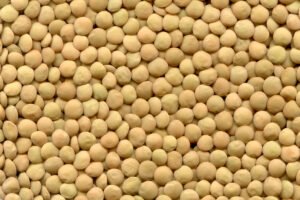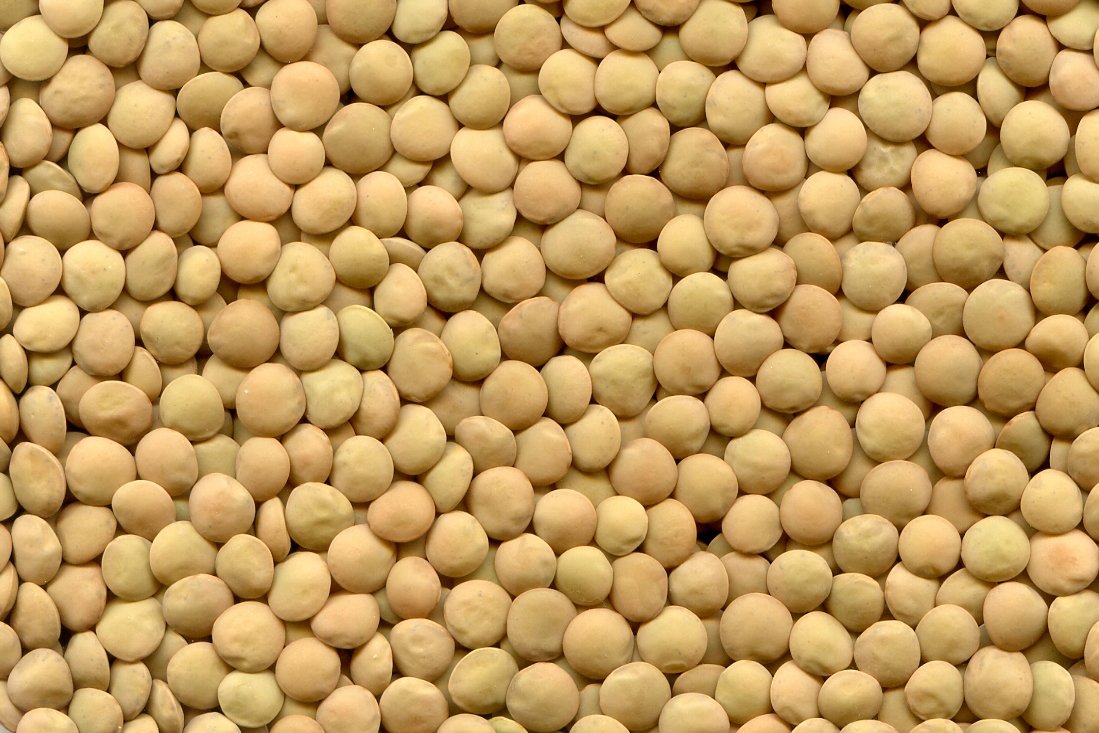Lentil Farming
Lentil is an important pulse crop in India and world. Lentils have more drought tolerance than other pulse crops. In Rabi it is also planted as an intercrop with mustard. Ophthalmic stabilizing bacteria are found in the roots of Lentils, which increase the fertility of the field by immobilizing it by taking Nitrogen from the atmosphere. For Lentils sandy loam to black soil is suitable.

Lentil is one of the main pulses crop of Rabi season. Lentils contain 25% protein, 59% carbohydrate, 0.5% calcium, 2% phosphorus. Lentils are extremely nutritious. In this, 22-25 percent protein, 50-60 percent carbohydrate and other nutrients are available in abundance. Lentil straw is also a very useful animal feed.
Poultry farming information guide for beginners.
Lentils are helpful in increasing soil fertility and controlling soil erosion. There has been a remarkable improvement in the production of Lentils in our country during the last three to four decades. In many states of the country, mainly new species and better production technology have contributed in increasing the production of Lentils. There is immense potential to increase the production productivity or area of Lentils.
Lentil is such a crop of our country which is cultivated in India in un irrigated areas after maize or paddy. Lentil is grown after jute in West Bengal and cotton in Maharashtra and Madhya Pradesh. Lentil is grown as a single crop in the Bundelkhand region of Uttar Pradesh. In the low-lying areas of eastern Uttar Pradesh, Bihar and West Bengal Lentils are sown as a standing paddy crop.

In our country Lentils are commonly used as pulses. Apart from this Lentils are also used in salty and other vegetarian dishes.
Improved varieties of Lentils:
Improvement and selection of special species for a particular area is necessary to get more yield. Species recommended for different regions are as follows
Farming of Exotic Vegetables in India.
- Mallika Masoor (K-75) – This variety matures in 135 days and gives an average yield of 14 quintal per hectare. Its 100 grains weigh 34 grams.
- Pant Masoor 406 (PL-406) It is rust and wilt resistant variety which matures in 140 days. It averages 20 quintals per hectare gives yield.
- KLS-218 – It is Uktha disease resistant variety which matures in 125 days and gives average yield of 14 quintal per hectare. Its 100 grains weigh 18 grams.
- Pusa Shivalik – Recommended for north-west plains and central region the average yield of this variety is 14 kg per year and the maturity period is 135 days. This rust is resistant to disease and its 100 grains weigh 3-1 grams. The color of the grains is gray.
- Pusa Vaibhav – Pusa Vaibhav was recommended in 1996 for the plains of North West. The average yield of this variety is 178 kg per crop and the maturity period is 135 days.
- Pusa Masoor 5 – Pusa Masoor 5 was recommended for the National Capital Region in 2004. The average yield of this variety is 17 per cent and the maturity period is 123 days. quality seed.

In our fields we should use only quality seeds by that the seed quality of Lentils affects the germination capacity and the yield after sowing. Seed quality genetic purity, physical purity and species characteristics are important from the point of view. Better germination increases the ability of the seed to produce a plant. Vigor is the rapid rate of germination in the seed and the ability to produce healthy plants.
Production technology for Lentils:
Biofloc farming guide for beginners.
Farm preparation: The cultivation of Lentils generally depends on the safe moisture of the rain. If required if available one irrigation must be done before sowing. It helps in ensuring proper setting and germination of seeds. The soil of the field should be porous and of proper depth for proper development of roots. Proper drainage is essential for Lentils. The field should also be free from pre-harvest residues. Lentils should not be cultivated in fields having alkaline and high ground water. Sandy loamy and medium loamy soils are suitable for the cultivation of Lentils.
After harvesting of Kharif crop, 2-3 light plowing should be done. Lentils can also be grown successfully in fields left vacant after paddy. In paddy fields, it can be cultivated by secondary method.
Sowing time: The appropriate time for sowing Lentils is 1-15 November. Late sowing results in lower yield. Late sowing of Lentils is done till the first week of December in the western and lowlands.
Seed rate and sowing method:
Accurate production and numbers are essential. To ensure hiding in the field 50 kg seed of normal grain variety and 35-40 kg seed of small grain variety should be sown per hectare. The amount of late sowing should be increased. Sowing should be done in rows by indigenous plow or advanced sewing machine. The distance from the queue to the bar should be kept 25-30 cm. Sowing in rows helps in weed control and also helps in proper development of the tree. Seeds should be sown at a depth of 5 cm. whenever there is doubt about the virulence of the seed the fertilizer should be checked before sowing.

How to do cucumber farming in Polyhouse?
Seed treatment:
Treat the seed before sowing. Follow the directions given by the manufacturers when using chemicals. Treatment of Rhizobium culture is necessary. Dissolve 50 grams of jaggery in half a liter of water and boil it. Put 10 kg of seeds in the bucket and mix it well. Dry the treated seed in shade for 5-6 hours. Apart from this the use of Phosphate Mobilizing Bacterial (PSB) culture enhances the availability of phosphorus to the plants. The use of this leads to good production.
It can be used with Rhizobium culture. One packet is suitable for 10 kg of seed. After mixing the solution prepared for Rhizobium culture, dry the seeds in shade by mixing both the cultures.
Fertilizers and their use:
Fertilizer should be used on the basis of recommendation of soil test. Normally 15-20 kg Nitrogen is recommended at the rate of 40-50 kg, phosphorus 20 kg potash and 20 kg per hectare. To meet this quantity 100 kg DAP 33 kg Murate of Potash and 200 kg. Gypsum can be applied per hectare. If the soil moisture is low, then the amount of manure should be reduced. Fertilizers should be applied at the time of sowing. For Lentil cultivation 20 kg nitrogen should be scattered in the field in the form of urea after harvesting the paddy crop. Apart from this phosphate at the rate of 15 kg should be sprayed on the crop at the time of flowering.
Irrigation:
Lentils do not require much water. One irrigation should be given 40-50 days after sowing before flowering. This increases the yield. Irrigation is not required in case of rain. It should also be ensured that there is no water logging in the field. Water logging damages the Lentil crop.
Crop protection:
Kadaknath chicken farming project for beginners.
Major diseases and prevention
Wilt – This disease is caused by soil and seed borne fungus (due to this disease the growing seeds and plants die before or soon after leaving the ground. This happens after time. Then its roots turn brown and it dies by hanging. Symptoms of disease appear even on the developed plant. The growth of the plant stops. The leaves start turning yellow the roots of the diseased plant partially or completely. It becomes light or dark reddish brown in color and the plant dries up and dies.To control this disease, treat the seeds with fungicide like Thiram + Carbendazim (25 gm per kg of seed) and apply wilt resistant species.
Rust – This disease is caused by a fungus called Uromyces feri. The increase in humidity in the environment increases the chances of disease. The disease manifests as light yellow raised powdery spots on the lower surface of the petiole and leaves. As the disease progresses, brown spots appear on the leaves, stems, branches and pods etc. Thereafter, dark brown or black elongated spots are formed on the stems and branches. The leaves dry up and fall. Anti-rust species neutralizes the effect of this disease. On seeing the disease, 0.25 percent solution of Mancozeb (2.5 gm day 1 liter water) should be sprayed on the crop. Repeat spraying as needed with an interval of 15 days.
Powdery Mildew – This disease is caused by a fungus called Erysiphi polygonii. The disease can infect the plant at any stage. The flowering stage is very sensitive. Under favorable conditions the disease is capable of causing great harm. A little higher than normal temperature and humidity found to be favorable for this disease. The disease appears on the leaves in the form of fine powdery spots. Gradually spreading and covering the leaves, stems and pods. The diseased leaves twist and dry up and fall off. Spray the diseased crop with Tridomorph 2% solution of soluble sulfur at the rate of 1 liter per ha. Repeat after 12-15 days as needed.
Jackfruit farming guide for beginners.
Major Pests and Prevention
Aphid – is a small insect that causes damage by sucking the sap of leaves and other tender parts of Lentils. The affected parts dry up and the plant becomes weak. Most of the attack of mahu occurs on the crop at a later stage. If its attack occurs at the early stage of the crop, the plant dies. Its number increases rapidly.
Thrips – This is a small long black insect found on leaves, flowers and pods of Lentils. They suck the juice from the leaves, due to which white colored chews or marks are left on them. Lack of moisture in the soil can cause more damage to the plants.
For the control of Aphids and Thrips apply Dimethiat 30 EC. 500 ml or Phosphomindan 85 EC 250 ml. Or Indosulfan 35 EC 125 Ltr or Chlorpyriphos 20 EC 750 ml. Dissolve it in 600-600 liters of water and spray it on the crop per hectare. Repeat spraying after 12-15 days as needed.

(Note: Before using any chemicals kindly contact to your local agriculture scientists just because of availability and actual requirement for your plant characteristics.)
Groundnut (Peanut) Farming Information Guide
Harvesting:
When the pods are ripe (70-80%), the crop should be harvested when the pods reach a drying stage. The crop should be dried in the field and the grains should be separated. After ripening, do not allow the crop to remain large in the field for a long time because late harvesting causes loss of yield due to spillage of grains from the beans.
Storage:
Before storage, the beans should be dried thoroughly so that the moisture content in them is about 10-12 percent, the seeds should be treated with insecticides at the time of storage. Apart from this 3 grams per quintal tablet of Aluminum Phosphide (Sulphas) provides protection from pests during Lentil storage.




